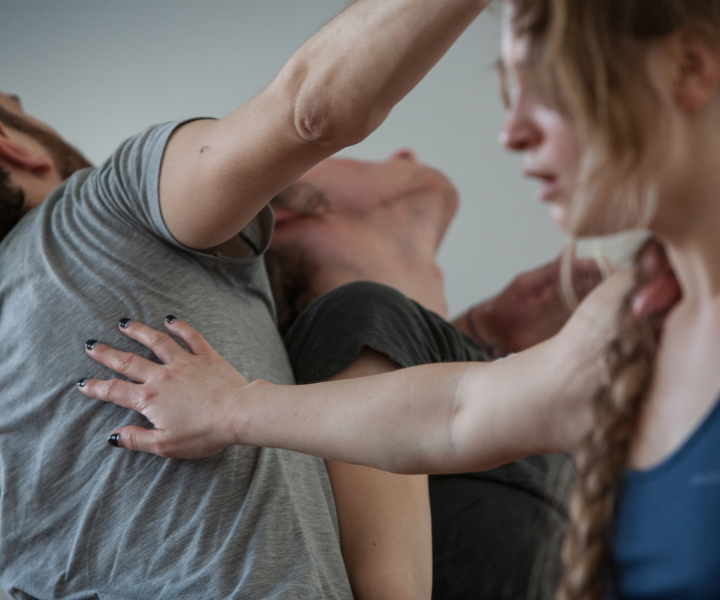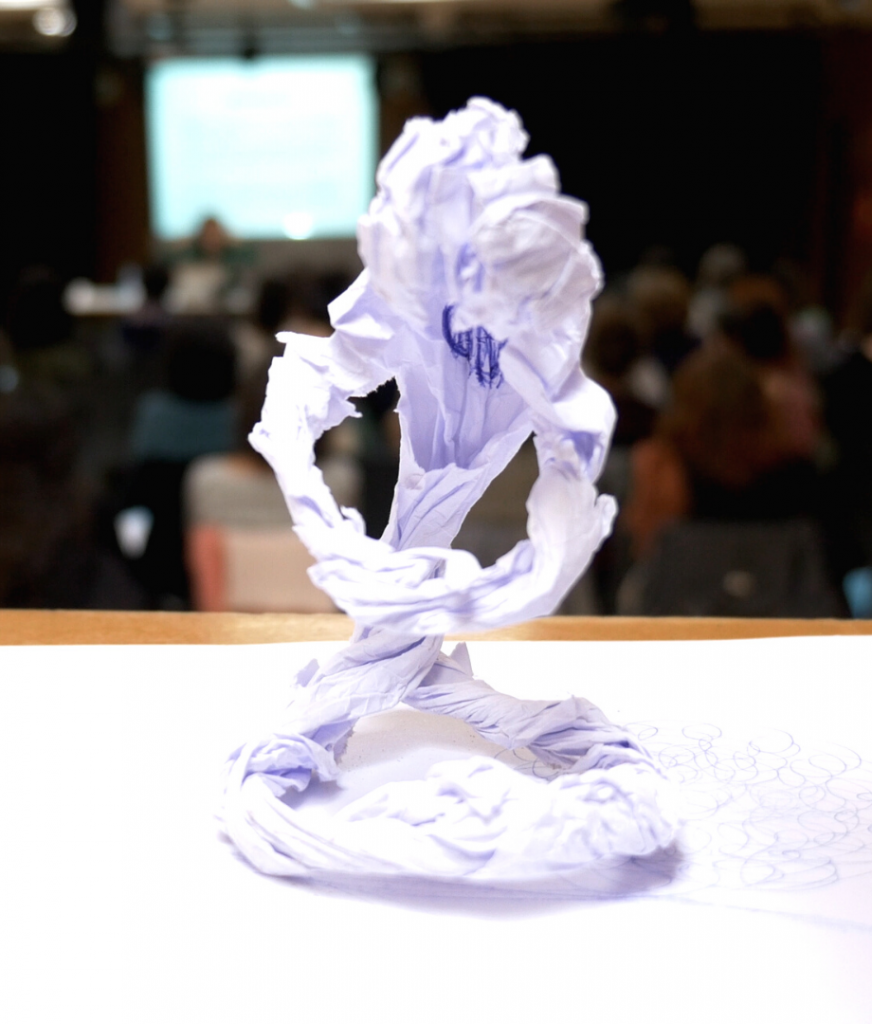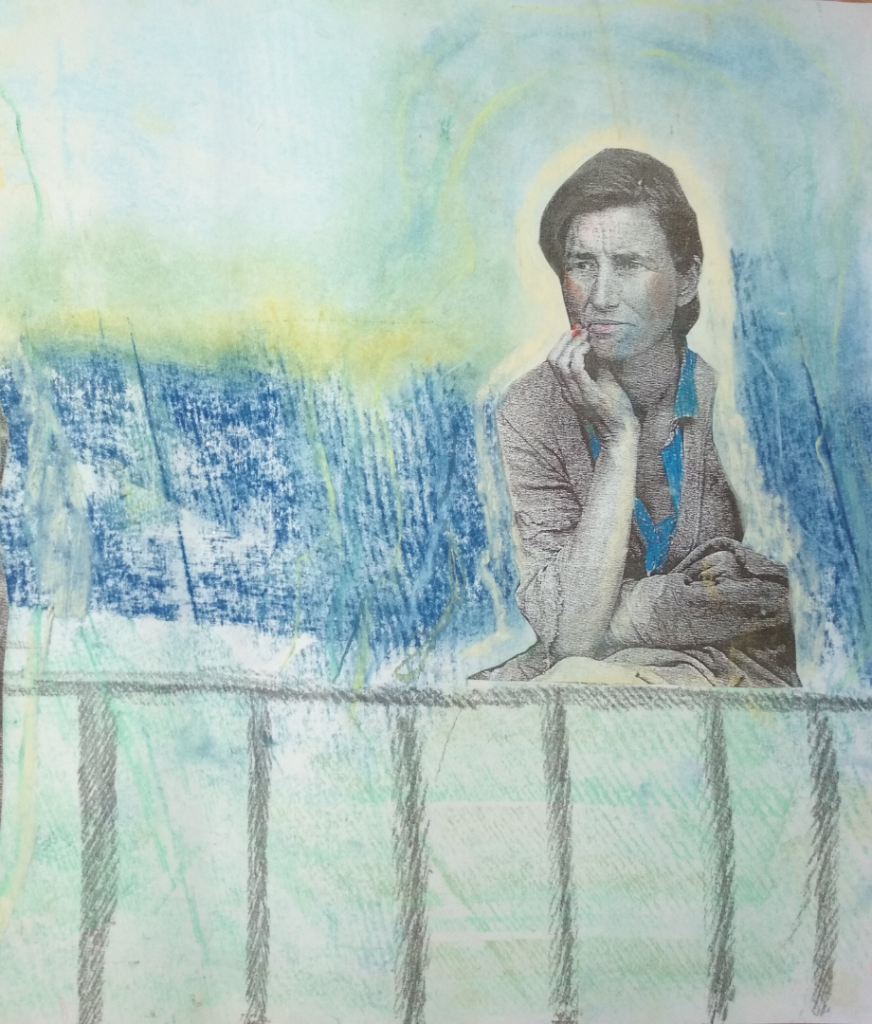We trust art as a transforming and healing medium; as a tool to unite the body, heart and brain. We work so that the individual acquires awareness for the application, harmony and use of these three vital body areas.
We advocate, in an innovative way, the training of people in their broadest profiles and combine the expressive arts, movement, dance and education for whatever their professional and personal purpose may be.
We focus on developing a concept of completeness from the individual and the group (treating each group and each individual as unique and genuine) promoting presence, security and availability for the flow of emotions, getting closer to the essence of each person. It is through art (in any of the disciplines) that the reality of our lives is accessed and it is art that is in charge of channeling our lives towards well-being.



The Lavan method interconnects the body and its movement with wisdom and creative force. Memory is impregnated in the body and cells since life began in the womb and it is movement that frees us from the accumulated load and unnecessary body tensions that reduce vitality and add resistance. We understand the body as a container of stories from our life and lives that have preceded us and that, in different ways, patterns, movements and gestures etc continue to accompany us; sometimes constructively and sometimes in a limiting way. In our work, we do a mapping to give artistic and/or verbal expression to our limitations so that they can be released and create access to our authentic essence.
Each of our students acquires a body and anatomical awareness from a micro level (each of the parts that make up our body: skin, tissues, bones, muscles, expression …) to a macro level (What does our body express? What message does it give to the world? What fears and insecurities does it hold?). Complementarily, we use the metaphor as a resource for knowledge and extension of our own vision, opening ourselves to a look not yet considered.
Working with creative writing in the form of a diary from the beginning of the process (either individual or group, depending on the training) helps to observe the process with perspective and evolution.
Development of listening and active response of the student, as well as other important factors when interacting socially. Learning to elaborate returns from complete levels of the human being (I see, feel, imagine, listen, it reaches me, etc.) as well as the use of silence to accompany us in communication, before or after a sentence. Including this perspective helps to gain insight into conflict resolution, social skills management, and communication in general.
The tools under the Lavan method:
body
The body is understood as the instrument that we all possess. With greater or lesser necessity it has to be refined, pampered, contemplated and shed of the guilt, fears and insecurities that unnecessarily burden and inhabit it. It is a tool by which we access our personal as well as social knowledge. The body is a revealer of emotions, personality and history itself, with the help of corporeality that either at rest or movement recognizes the parts of itself and the relationship with the space and objects that surround us.
DANCE AND MOVEMENT
Through movement, not only physical changes are generated but also internal ones, as the physical and psychic are interconnected, transforming the ‘not’ of the body: I can not, I dare not, I do not work ... to I can, I dare, I serve. When we dance we do it from its basic the elements (movement, body expression, style, space and rhythm) and from the main elements of music (melody, harmony and rhythm) as well as we from feeling (fear, anger, anguish, love ...). Each of these states are characters that inhabit the interior world of each person and struggle to find a way to express themselves in order to get out.

SCENIC CREATION AND PERFORMANCE
Training and scenic research processes will be developed, providing techniques, exercises and tools with the intention that, through prior research and documentation, will be able to create and compose scenic pieces with biographical and / or social content that are proposed at the collective level. Consciousness under these parameters will aid clear decision-making; release creativity; guide creation; lay the foundations of creative work and endow independence. These creative processes and external directives offer unusual and genuine results.
VOICE AND SOUND
Initially, a “being” is proposed from a relaxed, serene, attentive and present place using the connection of the breath and accessing the expression of sound and voice, relying on movement and subtle thought. From high frequencies to slower ones, a tour will be made through the different registers that inhabit our body, thus being able to integrate the voice into our mind, body and spirit. Expressing oneself from an open, relaxed, conscious and present body facilitates the connection to create characters, enter dynamics where to develop fantasy and play as well as a corporality and projection of the voice with conviction and security.
DRAWING, PAINTING AND COLLAGE
The practice of placing pigment on paper, using crayons, picking up a thin or thick brush, choosing the type of material, touching clay or choosing images connects us directly with shapes and sensations that unite the internal and external world. Drawing and painting contain the memory of movements and memories that the passage of time seems to have faded. What are the shapes, textures, symbols of our imagination? What messages are implicit when I project my feelings, my frustration, my hidden desires onto a canvas? Through a connection during the creation of the work and an analysis of the results there is an introspection and connection with the problem that until now had not emerged.

MONOLOGIES AND DIALOGUES
Once we find the form and volume of our words, suddenly we are the narrators, poets, writers of our own individual and collective stories. It is an essential process in the encounter with oneself and with all the characters that inhabit us, giving them a voice, a word, pronouncing them, writing them. This helps to become aware by being used as a bridge to express the entire internal world. What do we say? How do we say it? What intonation do we use? What happens in my body when I speak? And many more issues are revealed to us when we work with writing and speaking.
INTERPRETATION
It is the way of being seen in the eyes of another and at the same time, as you put on the skin of other characters, you are abandoning your own way of being and giving life to other characters. Regardless of the characteristics that accompany each person (shy, discreet, judicious ...) when a character is brave, our bravest character comes out on stage, surprising us with what he can defend. Thanks to the empathy that is developed, after putting ourselves on hold and living the situation of other characters we gain security, trust and understanding in the face of multiple situations. It helps us discover unknown facets and characters. We ask ourselves the question not of what Juliet or Macbeth is like but what if there is of Juliet or Macbeth in me.
IMPROVISATION
The ability to tell stories from a given word, idea, action or situation with one, two or more people is developed directly. You learn to play intensely, spontaneously but no less seriously. There is no situation that is more in the present than improvising. If you have another thought it is because it is not in the "here and now", which makes it easier for us to truly connect with what is happening and we put aside the judgments and let all our creativity and spontaneity emerge. It gives us the tool that everything is “possible”, mistakes become possibilities and the moment becomes truly important, leaving aside the final result.
sharing
It is the final space destined to voluntarily share what happened, what happens and what we let flow during the session, what has surprised, confused, discovered, and understood us. It is the moment that, individually, the group is shared with what you take with you to reflect, what has emerged for you, how you have been resignifying situations, how you have been able to find the familiar in the unknown and the unknown in the familiar. Destined to be able to close processes and give form to the closing of the session with the intention of being able to express everything that could have remained in the air.

